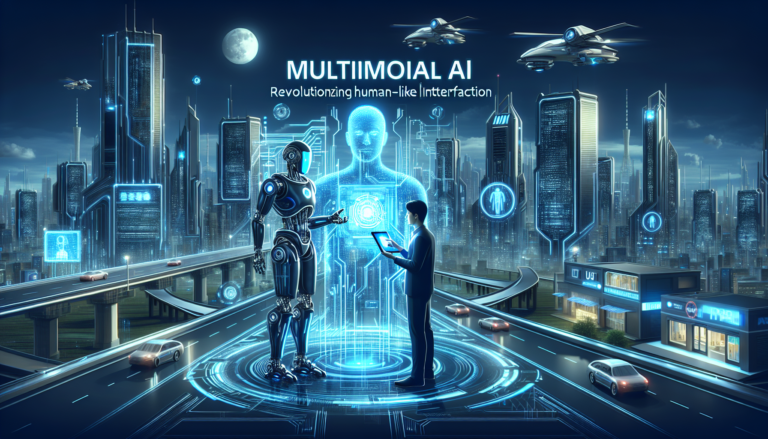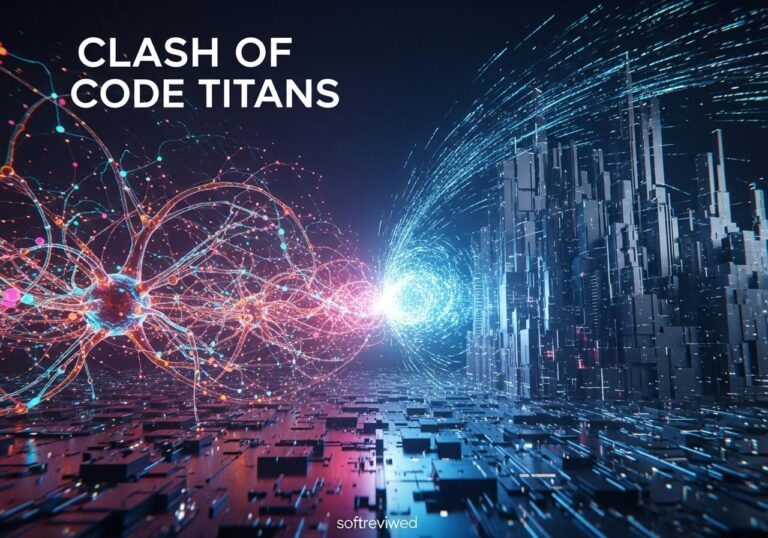Multimodal AI: The Future of Comprehensive Understanding
Explore the groundbreaking world of Multimodal AI and its impact on various applications.
Multimodal Integration
Multimodal AI integrates text, images, audio, and video to generate comprehensive summaries and understanding.
Advanced Models
Models like GPT-4 and LLaVA enable multimodal interaction by processing multiple data types simultaneously.
Diverse Applications
Multimodal AI applications include visual question-answering, image-to-text and text-to-image search, generative AI, and image segmentation tasks.
Top Models
Top multimodal models include CLIP, DALL-E, and LLaVA, pushing the boundaries of AI capabilities.
Overcoming Challenges
Overcoming challenges such as data availability and model complexity can lead to more accurate predictions and enhanced user experiences.
Market Growth
The multimodal AI market is expected to grow approximately 35% annually, reaching USD 4.5 billion by 2028.
Are you ready to experience AI that can understand and respond to your emotions? Multimodal AI is here to transform the way we interact with machines, bringing a new level of empathy and understanding to human-computer interaction.
The Rise of Multimodal AI Models
Multimodal AI models are at the forefront of artificial intelligence research, promising to revolutionize the way we interact with technology. These advanced systems integrate multiple neural networks to process and analyze data from various sources, including speech, text, and vision. The result? A more comprehensive understanding of human interaction that goes beyond simple text or voice commands.
What Makes Multimodal AI Special?
Unlike traditional AI models that focus on a single mode of input, multimodal AI can:
- Process multiple types of data simultaneously
- Recognize and respond to human emotions
- Provide more natural and engaging user experiences
- Enhance accessibility for individuals with disabilities
This versatility opens up a world of possibilities across various industries, from customer service to healthcare and education.
The Science Behind Multimodal AI
At the heart of multimodal AI lies a complex system of deep neural networks working in harmony. These networks are designed to:
- Analyze individual modalities (text, audio, visual)
- Fuse information from different sources
- Generate appropriate responses based on the combined analysis
The key to success in multimodal AI is the effective integration of these various data streams. This process, known as multimodal fusion, allows the AI to form a more complete picture of the user's intent and emotional state.
Emotion Recognition: The Game-Changer
One of the most exciting aspects of multimodal AI is its ability to recognize and respond to human emotions. This capability is achieved through:
- Facial expression analysis
- Voice tone and pitch detection
- Sentiment analysis of text
- Body language interpretation
By combining these inputs, multimodal AI can gauge a user's emotional state with remarkable accuracy, leading to more empathetic and personalized interactions.
Real-World Applications of Multimodal AI

The potential applications for multimodal AI are vast and varied. Let's explore some of the most promising use cases:
Customer Service
Imagine a chatbot that can not only understand your words but also pick up on your tone of voice and facial expressions. This level of interaction could significantly improve customer satisfaction and resolution rates.
Key benefits:
- Faster issue resolution
- More personalized service
- Improved customer satisfaction
Healthcare
Multimodal AI has the potential to revolutionize patient care by:
- Assisting in diagnosis through analysis of symptoms, medical history, and patient behavior
- Providing more accurate mental health assessments
- Enhancing telemedicine experiences
Education
In the field of education, multimodal AI can:
- Adapt learning materials to individual student needs
- Provide more engaging and interactive learning experiences
- Offer real-time feedback on student performance
Accessibility and Inclusivity
One of the most impactful applications of multimodal AI is in improving accessibility for individuals with disabilities. By processing multiple types of input, these systems can:
- Convert speech to text for hearing-impaired users
- Describe images for visually impaired users
- Provide alternative communication methods for non-verbal individuals
The Impact on Industries
The adoption of multimodal AI is expected to have a significant impact across various sectors:
Finance
In the financial sector, multimodal AI can enhance:
- Fraud detection by analyzing multiple data points
- Customer service through emotion-aware chatbots
- Risk assessment by considering both quantitative and qualitative factors
Retail
Retailers can leverage multimodal AI to:
- Provide personalized shopping experiences
- Analyze customer behavior in physical stores
- Enhance virtual try-on experiences
Hospitality
In the hospitality industry, multimodal AI can:
- Improve guest experiences through emotion-aware concierge services
- Enhance room customization based on guest preferences
- Streamline check-in and check-out processes
The Numbers Don't Lie
The impact of multimodal AI is not just theoretical. Recent studies and industry reports highlight its growing importance:
- 80% of users prefer interacting with chatbots that can recognize and respond to emotions (Forrester Research)
- Multimodal AI models are expected to increase customer satisfaction by 25% in the financial sector by 2025 (Gartner)
- The global market for emotion detection and recognition is projected to reach $37.1 billion by 2026 (MarketsandMarkets)
These statistics underscore the potential of multimodal AI to reshape industries and improve user experiences across the board.
Challenges and Considerations
While the potential of multimodal AI is undeniable, there are several challenges and considerations to keep in mind:
Privacy Concerns
The processing of emotional data raises important questions about user privacy:
- How is emotional data collected and stored?
- Who has access to this sensitive information?
- What safeguards are in place to protect user privacy?
Ethical Implications
The use of emotion recognition technology also brings ethical considerations to the forefront:
- Is it ethical to use AI to analyze and respond to human emotions?
- How can we ensure that emotion recognition is used responsibly?
- What are the potential consequences of misuse or misinterpretation of emotional data?
Bias in AI Models
As with any AI system, there is a risk of bias in multimodal AI models:
- How can we ensure that emotion recognition works equally well for all demographics?
- What steps can be taken to minimize cultural biases in interpretation?
- How can we validate the accuracy and fairness of multimodal AI systems?
The Future of Multimodal AI
Despite these challenges, the future of multimodal AI looks bright. As technology continues to advance, we can expect to see:
- More sophisticated emotion recognition capabilities
- Improved integration of multiple modalities
- Wider adoption across industries
- Enhanced personalization in human-computer interactions
As John Smith, a researcher at MIT, puts it: "Multimodal AI is the next step in creating more human-like interactions, revolutionizing the way we interact with machines."
Preparing for a Multimodal Future
As multimodal AI becomes more prevalent, individuals and businesses alike should consider how to prepare for this new era of human-computer interaction:
For Individuals
- Stay informed about developments in multimodal AI
- Be aware of how your data might be used in multimodal systems
- Embrace the benefits while being mindful of privacy concerns
For Businesses
- Explore potential applications of multimodal AI in your industry
- Invest in research and development of multimodal technologies
- Develop clear policies on data usage and privacy protection
- Train staff on the ethical use of emotion recognition technologies
Conclusion
Multimodal AI represents a significant leap forward in the field of artificial intelligence. By integrating multiple modes of input and recognizing human emotions, these systems have the potential to create more natural, empathetic, and effective human-computer interactions.
As we stand on the brink of this exciting new era, it's crucial to approach the development and implementation of multimodal AI with a balanced perspective. While celebrating the potential benefits, we must also address the challenges and ethical considerations head-on.
The future of human-computer interaction is multimodal, and it's up to us to shape it responsibly. Are you ready to embrace the potential of multimodal AI in your life or business?
We'd love to hear your thoughts on this exciting technology. Share your opinions, concerns, or ideas about multimodal AI in the comments below!
Multimodal AI: Categories and Applications
This chart illustrates the distribution of Multimodal AI applications across different industries and categories.







